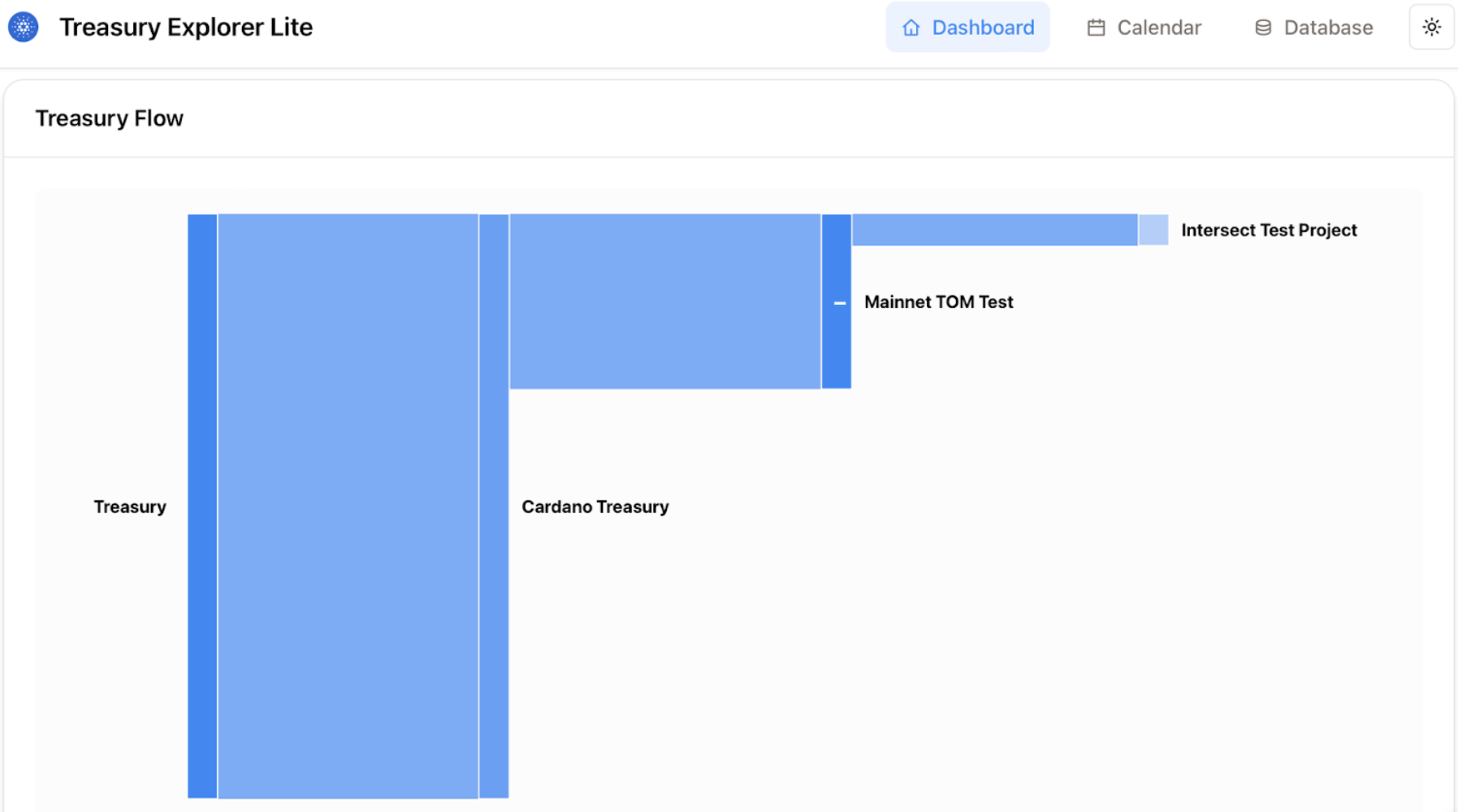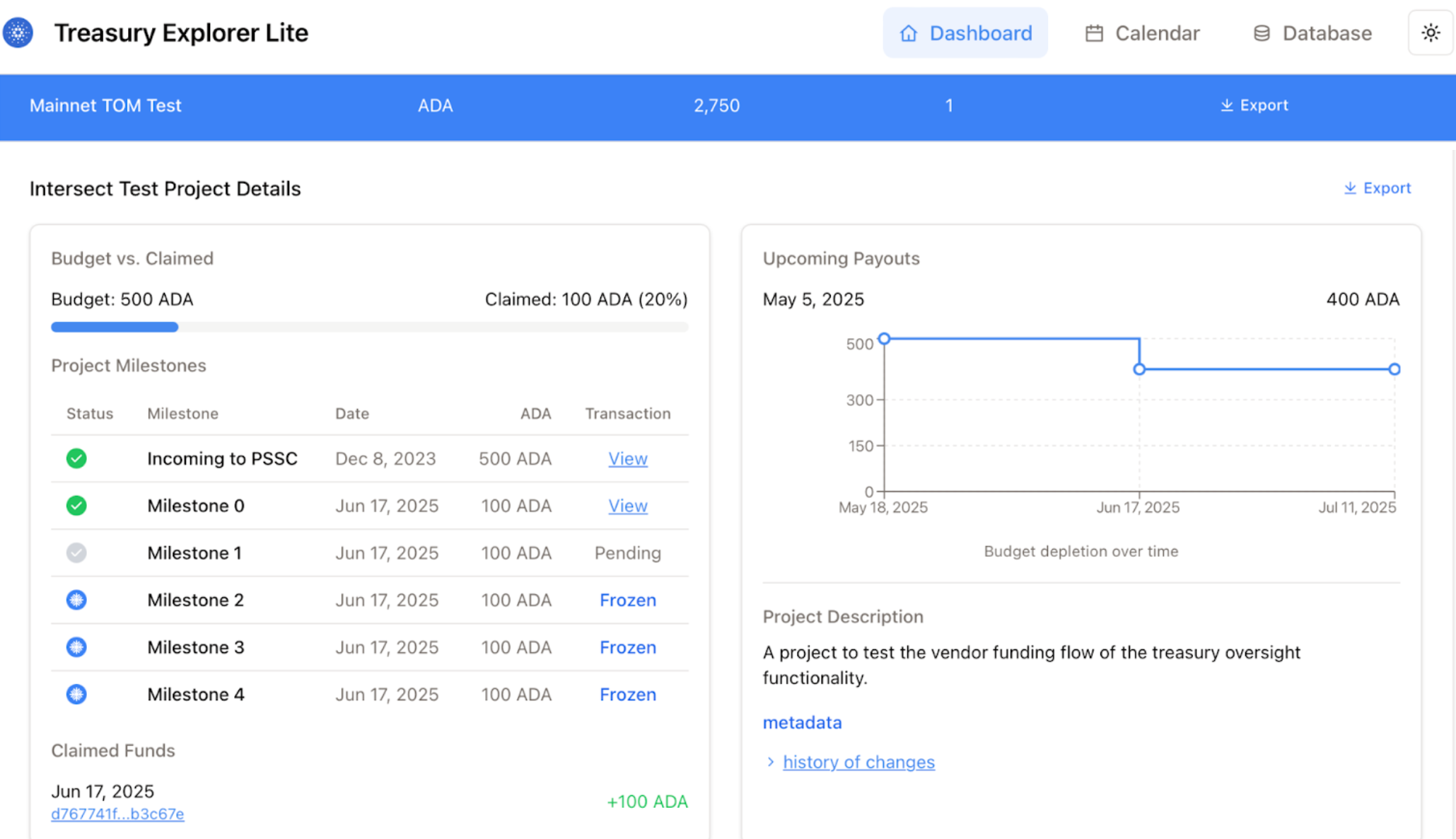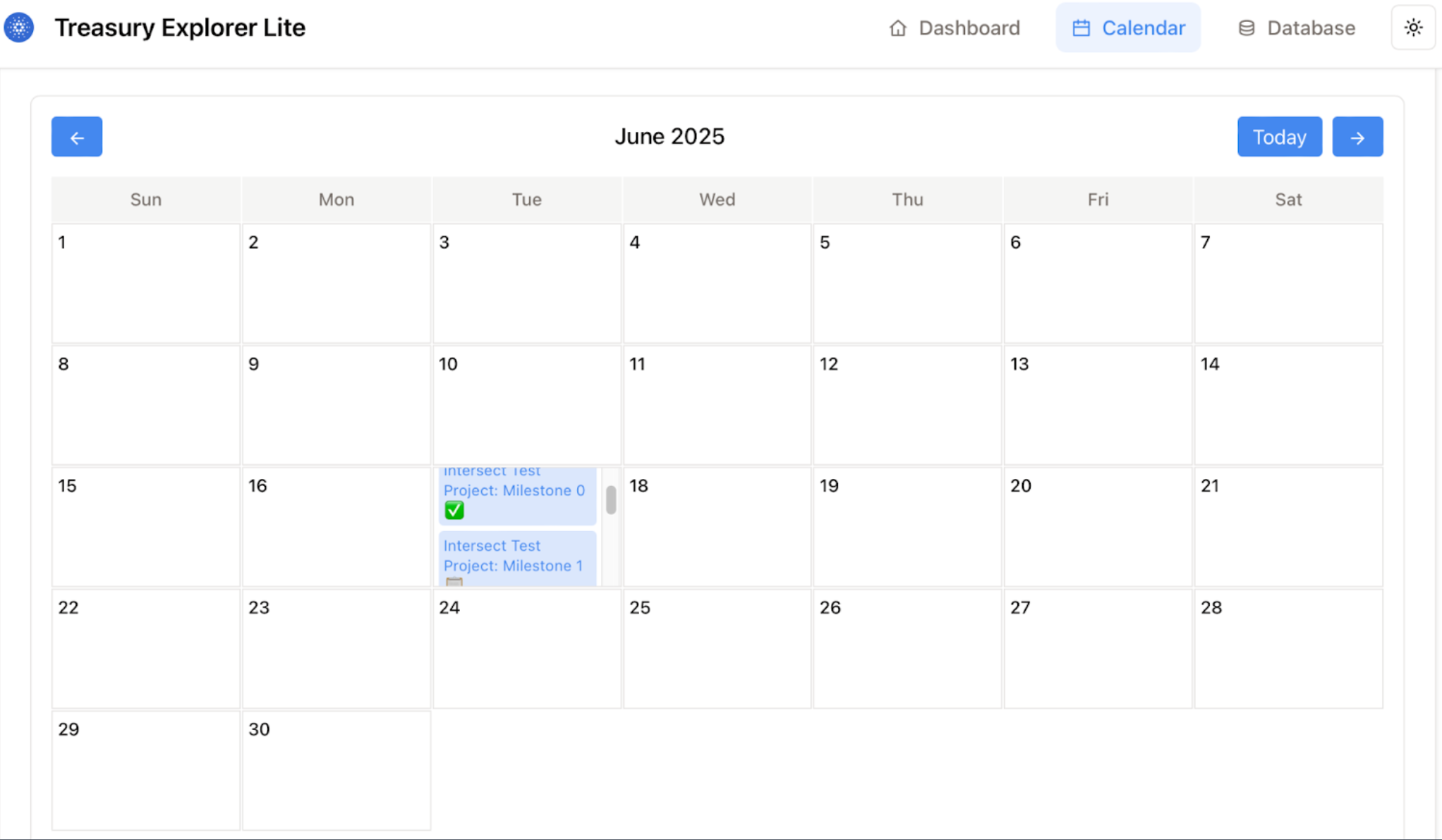Smart Contract Tooling: What’s available and who's it for?

Smart contracts are a valuable innovation of Web3, providing programmable logic to transactions. Such logic is extremely valuable when building transparent and safe mechanisms for managing Cardano treasury funds.
Intersect has collaborated with a focus group of community members to scope and develop treasury management tooling, aiming to maximize the utilization of smart contracts.
The group has been actively developing tooling proposals in close collaboration with IO Engineering, Sundae Labs, and Xerberus, with auditing being undertaken by TxPipe and MLabs.
Transparency through Smart Contracts
Smart contracts will hold treasury funds and vendor payments transparently on-chain, effectively in escrow. These smart contracts can be partitioned into themes and specific project contracts, enhancing community visibility and transparency.
The smart contracts have been built with a specific, limited set of permissions, each of which is authorized through keys and, should they be executed, would be transparent and auditable on-chain.
The tooling used to achieve this
3 key pieces of tooling have been developed to initially help accomplish this:
- On-chain smart contracts - SundaeLabs
- Web-based administration dashboard - SundaeLabs
- Financial dashboard - Xerberus
On-chain smart contracts (SundaeLabs)
SundaeLabs has developed on-chain smart contracts designed for treasury management. These contracts offer a straightforward yet robust method for managing funds withdrawn from the treasury.
Web-based administration dashboard (SundaeLabs)
SundaeLabs has also built an accompanying web-based interface for budget administrators, auditors, and vendors to interact with the smart contracts. The web-based administration dashboard will permit administrators to manage funds held at the TOM smart contract instances. You can access the interface here.
Some of the key functionalities of the administration dashboard:
- Administrators can initiate actions within the dashboard. They can create new TRSCs, manage existing TRSCs, and control the schedule of milestone payments for vendors.
- The dashboard displays the funds received into each TRSC, milestones, and associated payments, as well as the status of those payments. Here is an example below:
- The dashboard will show milestones and list their status (e.g., ready to claim, scheduled for the future) with expandable views to show milestone metadata. Here is an example below:
- Vendors can submit their evidence of milestone completion through the dashboard.
Sundae Labs has shared a video demo of the tooling here: Treasury Oversight Management by Sundae Labs.
Financial Dashboard - Xerberus
Xerberus has been building tooling to create a dashboard and analytics, tracking budget funds and smart contracts, and enhancing the transparency of on-chain data. This public-facing dashboard of TOM smart contract data will provide helpful visualizations of data to TOM users and the Cardano community. You can access the dashboard here.
Below are the key functionalities of the administration dashboard:
- An interface that displays all relevant on-chain budget movements, supported by contextualized data such as payment dates, ADA amount, and status.
- The interface also contains graph and table visuals that show the flow of capital from treasury stake addresses into the vendor's UTXOs and under which budget they fall. This will allow the community to track transactions easily. Here is an example below:

- Any remaining unspent vendor UTXO that will be swept back into the treasury at the end of the business year will also be visible.
- The entire platform will enable its users to transition from a high-level view (budgets) to a low-level view (vendor projects, milestones, and payments) through the unfolding of tables and graphs. Here is an example below:

- There is also a calendar view that allows you to view payments by date. Here is an example below:

How to build your own
Here is a link to the GitHub repository, which explains how off-chain data should be written and formatted so that it can work correctly with the smart contracts: https://github.com/SundaeSwap-finance/treasury-contracts/blob/main/offchain/src/metadata/spec.md
Contribute to future features.
If you would like to contribute any ideas for future features of the tooling discussed in this blog, please submit suggestions on the following GitHub repository: IntersectMBO/budget-management.
Why this matters for Cardano
While smart contracts are a vital way to demonstrate transparency, these tools enhance the usability and accessibility of both the contracts and the data contained within.
Smart contracts can be queried on-chain; however, even with clear metadata, they can be challenging to follow, as they may involve potentially hundreds of transactions related to smart contracts and treasury funds.
These tools make it easier for the community at large, including our oversight committee volunteers and vendors, to interact with and follow treasury funds.
They have been developed with extensibility in mind, as the uses and requirements for managing treasury funds and smart contracts are expected to evolve from here onwards.
Stay informed
As we transition into business-as-usual processes, we’ll continue to share updates and insights. This includes showcasing how the tooling is being utilized, as well as exploring opportunities to expand its functionality, address existing gaps, and introduce new features based on community feedback. We currently have a GitHub repository where we capture any features to be added to future versions of the tooling. Get involved at IntersectMBO/budget-management.